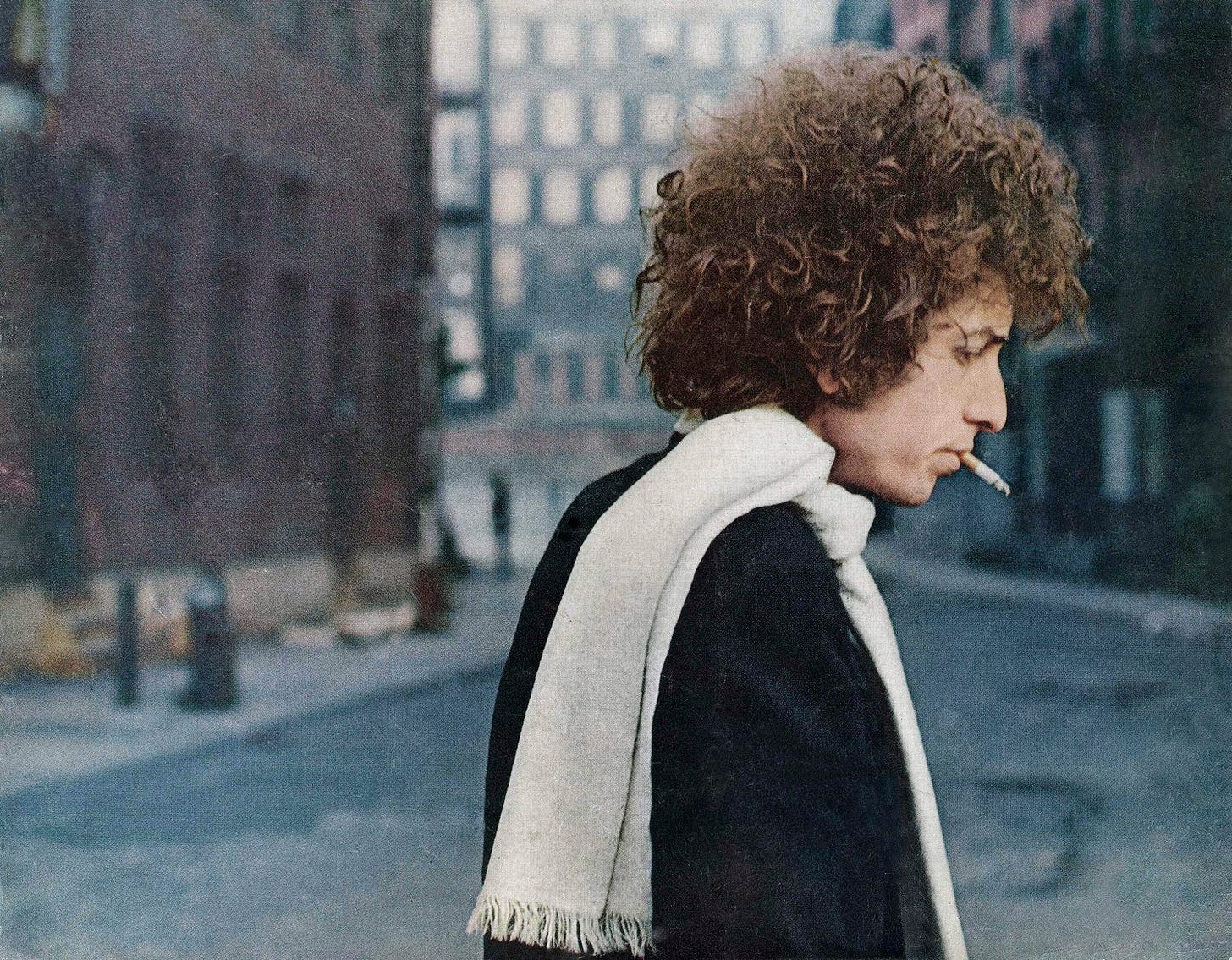Space / Speed Out of Mind: An Annotated Bob Dylan Playlist
Embracing the Mindset with 15 songs that deepened the grooves in my brain.

This one’s for the heads.
Recently, the eclectic Bob Dylan podcast Jokermen inaugurated MINDSET, a new series of curated Dylan playlists. The first, from musician Josh Tillman / Father John Misty, is a lot of fun, and very much in the Jokermen spirit – there are plenty of unconventional picks, including several great songs I hadn’t heard in ages. Maybe the playlist illuminates some previously hidden aspect of Tillman and / or Dylan as an artist; certainly, it’s further proof of the existence of Dylan Planet. But, most importantly, the MINDSET series is an excuse to celebrate the work of a singular artist and performer.
I’ve been enjoying the hell out of it. So much so, in fact, I was inspired to curate (and share) a playlist of my own.
Some of my picks surprised even me: there’s a lot more ‘80s Dylan than I would have guessed, while several periods I love (much of the classic era, proper studio recordings from the early-‘70s domesticity of Self-Portrait and New Morning, the stretch of celebrated albums following the 1997 comeback Time Out of Mind) were neglected. These aren’t my favorite Dylan songs per se (though I’d include two or three among my all-time most beloved tracks), nor are they necessarily the best place to start if you’re a neophyte (though I do think that anyone who comes to this playlist receptive to Dylan will find something to enjoy). There are many deep cuts, alternate takes, live rarities, and demos. If MINDSET had come along six months earlier or six months later, I would have produced a completely different list. I still might. Just you wait.
The main thing all these songs have in common is, at one time or another, they deepened the grooves in my brain. This, simply put, is good music, and while I’ve included a few notes below, the songs ultimately speak for themselves.
The Songs
I’ll Keep It With Mine (Blonde on Blonde outtake)
The mid-‘60s are the most celebrated period of Dylan’s career with good reason: it was here that he came into his own as an artist, arguably reaching his creative peak with albums like Highway 61 Revisited and Blonde on Blonde. This mysterious, elliptical track discards the latter album’s elaborate instrumentation but retains its psychedelic imagery and ambience. Dylan famously described his music from this era as having a “thin, wild mercury sound”; in my view, you can hear that more clearly here than on almost any other track.
Marchin’ to the City (Time Out of Mind outtake)
The blues are an integral part of Dylan’s music – some would say the most integral – and this track exemplifies Dylan’s blues at its best. Recorded during the Time Out of Mind sessions, “Marchin’ to the City” would eventually solidify into the harder, punchier “‘Til I Fell in Love With You.” By contrast, this take is raw and loose, with an almost improvisational feel – as if Dylan and his band are slapping it together out of sticks and mud.
Property of Jesus
One of the least-loved tracks from Dylan’s most underrated album, “Property of Jesus” is a weirdly bitter profession of faith. But, like many songs on Shot of Love, everything sounds fantastic, and the song has something much of Dylan’s more celebrated material lacks: an exuberant hook. “Property of Jesus” may be less a hidden jewel than an interesting curiosity, but I still can’t resist that shoutalong chorus.
Changing of the Guards
The fan-favorite opening track from what has become a fan-favorite Dylan release, 1978’s Street-Legal. I’m ambivalent about the album, which has several filler songs, but “Changing of the Guards” is vibrant, lyrically rich, and impeccably arranged. This is almost certainly the best use of horns in any Dylan song, and maybe as much a defining statement of change for the late seventies as “The Times They Are A-Changin’” was for the sixties – both for better and for worse.
I and I
An unjustly overlooked track from another fan-favorite Dylan album, 1983’s Infidels. Besides boasting one of that album’s most impassioned vocal performances, “I and I” examines the individual’s relationship with the Divine more compellingly than almost anything in Dylan’s then-recently concluded “Gospel” (that is, Christian Rock) Period. Not bad for a song written in 15 minutes.
New Danville Girl (Empire Burlesque outtake)
In the eighties, Dylan developed a bad habit of leaving the best songs off his albums. This epic, a collaboration with playwright Sam Shephard, was left off of 1985’s Empire Burlesque before being rewritten as “Brownsville Girl,” which would appear on Empire’s follow-up, Knocked Out Loaded. I prefer this version, though – it’s brighter and richer, with an energy that’s missing from its re-recorded cousin.

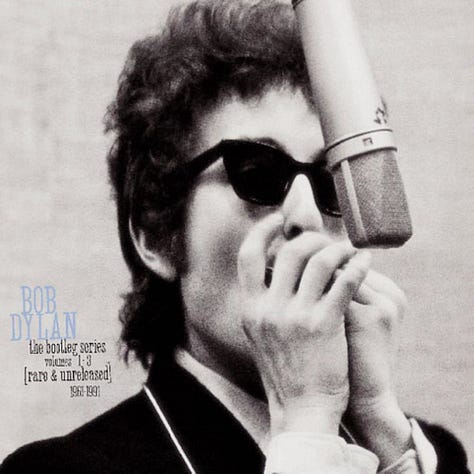
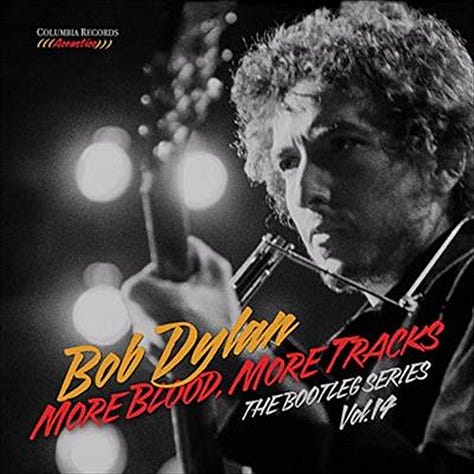

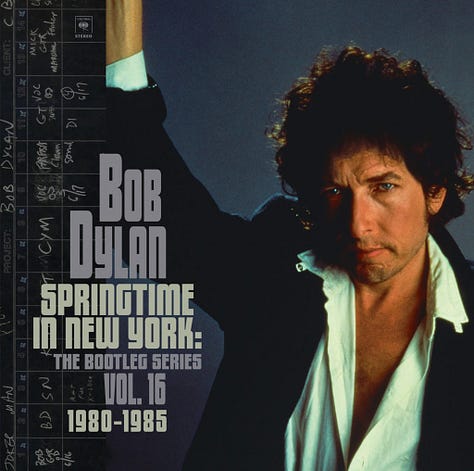

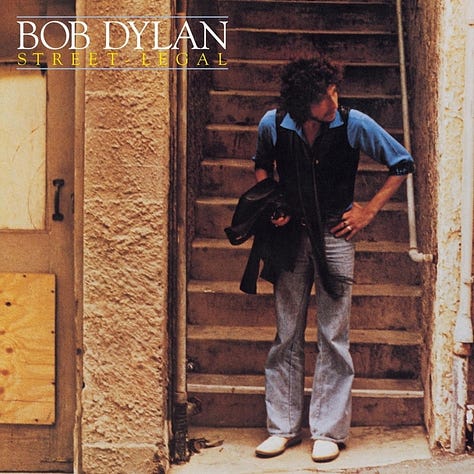
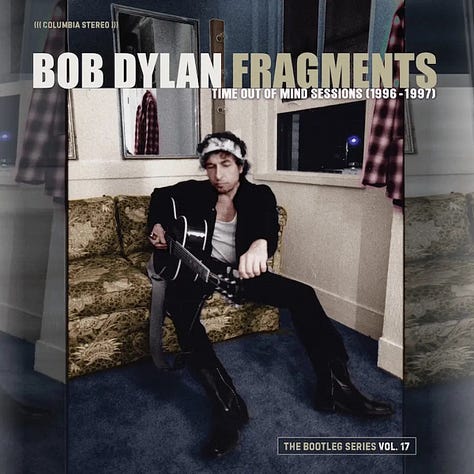
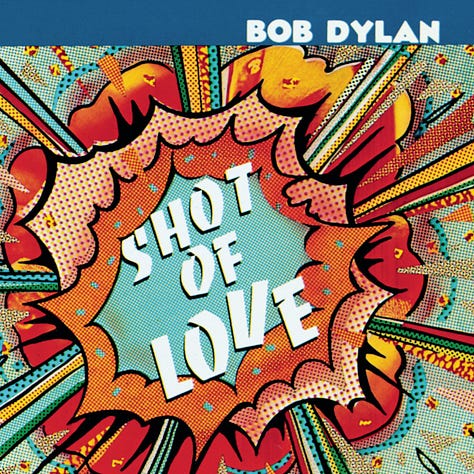
Disease of Conceit
1989’s Oh Mercy is one of my all-time favorite Dylan records, and “Disease of Conceit” just might be its best song. I don’t know if it’s the weary, loping piano line or Dylan’s inscrutable delivery of this inscrutable lyric, but something about this song penetrates deep into the sickness at the heart of the world.
Idiot Wind (Blood on the Tracks Outtake)
Possibly the most devastating version of one of Dylan’s most vicious songs. But while every version of “Idiot Wind” comes drenched in venom – especially the full-band arrangement ultimately released on Dylan’s legendary divorce album Blood on the Tracks – this take most clearly crystallizes the dejection at the song’s heart. A true epic.
Seven Curses (Live)
Greil Marcus has pinpointed Dylan’s embrace of folk music’s subjectivity – of, as Dylan himself put it, the “myth and the Bible and plague and famine and all kinds of things like that which are nothing but mystery” – as the essential element separating him from the rest of the ‘50s and ‘60s folk revival. This chilling, tragic, enigmatic song definitively proves his mastery of the form all on its own.
Dark Eyes
1985’s Empire Burlesque is often shorthanded as Dylan’s “dance record,” and it’s as much a mixed bag as you’d expect. Perhaps it’s fitting, then, that it ends with this song, one of Dylan’s great admissions of defeat. The great Patti Smith is evidently a fan – when she joined Dylan for an onstage duet in the nineties, she chose to perform this song.
Can’t Wait (Time Out of Mind outtake)
One of many, many fantastic alternate takes left off of Time Out of Mind (see also Marchin’ in the City, above), this version of “Can’t Wait” is much cooler and sleeker than the one on the album. It crawls along at a snail’s pace, leaving itself plenty of room to breathe – a mesmerizing performance.
Key West (Philosopher Pirate)
2020 was a rough year, but there was at least one highlight: Dylan’s most recent studio album of new material, Rough and Rowdy Ways. “Key West (Philosopher Pirate),” a gorgeous piece of mournful Americana, is one of several great cuts – and proof that, well into his eighties, Dylan is still capable of breathing new life into the old song traditions.
Wild Mountain Thyme (Live at the Isle of Wight, 1969)
Since much of Dylan’s reputation rests on his songwriting, he tends to be underrated in other areas. This song highlights his ability to take others’ songs – or in this case, a nineteenth-century folk song – and make them his own. A lovely performance from one of his best-ever concerts.
When I Paint My Masterpiece (Demo)
“When I Paint My Masterpiece” is one of several Dylan songs that became a hit for someone else (The Band, in this case) despite lacking a definitive studio version. In this version – easily my favorite of the released recordings – the performance’s humility gives the refrain real weight. “Someday, everything is gonna be different,” indeed.
Desolation Row
If your Bob Dylan playlist doesn’t end with “Desolation Row,” what are you even doing?
